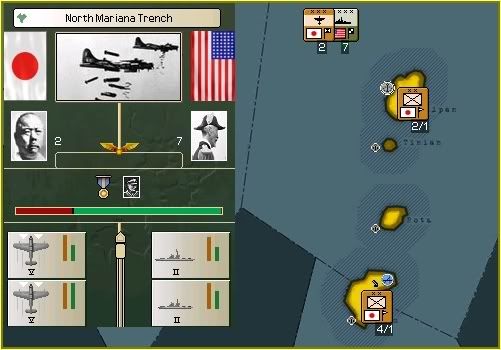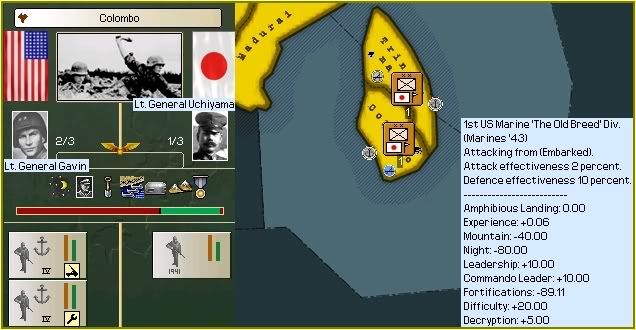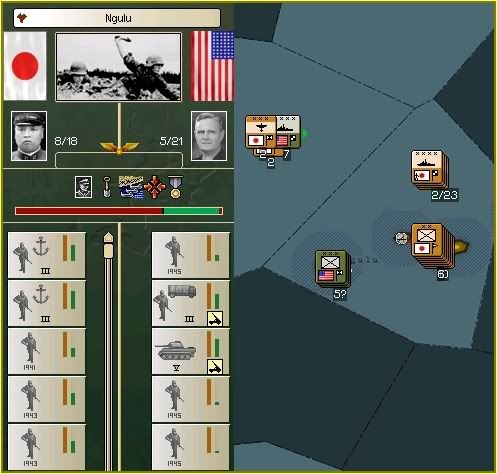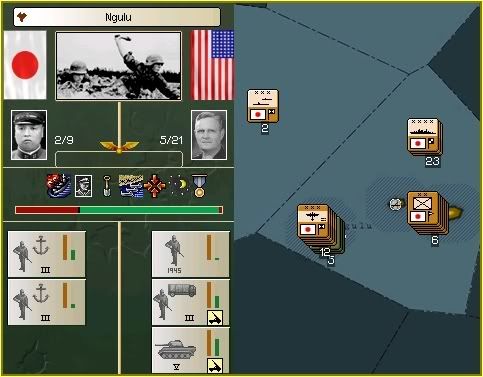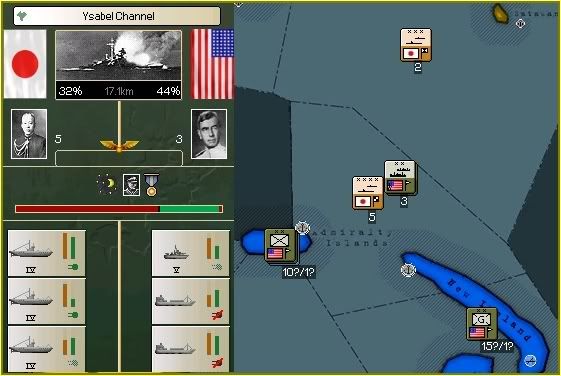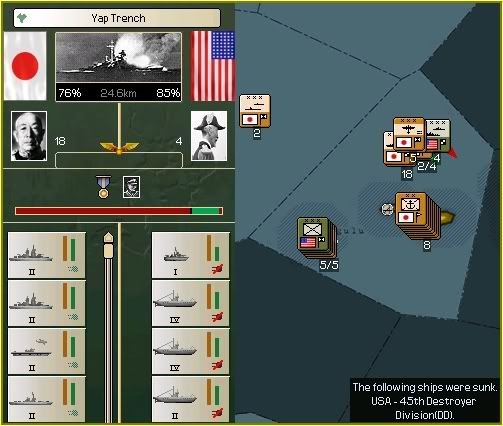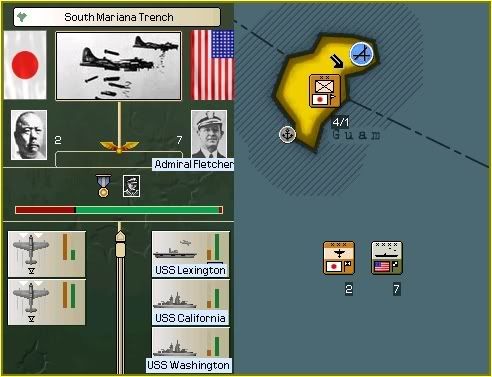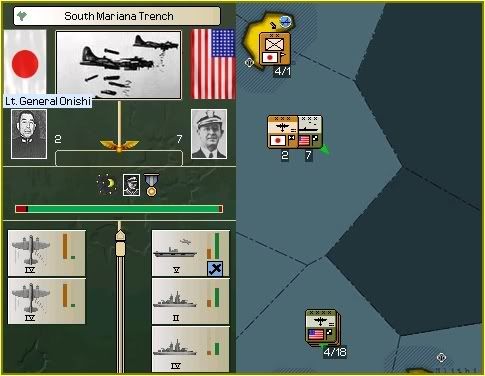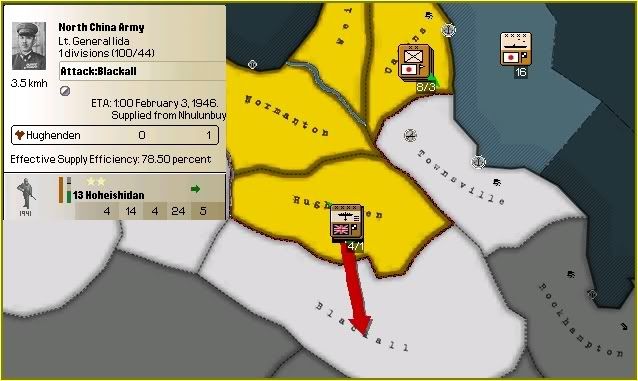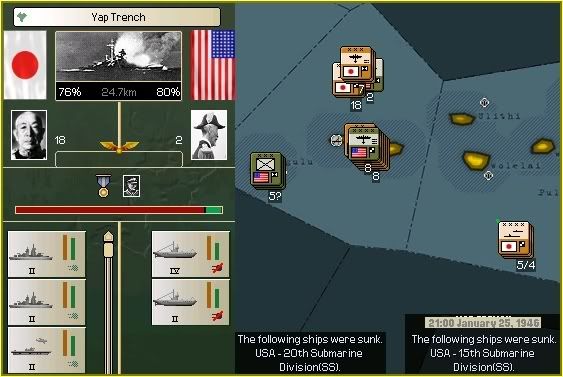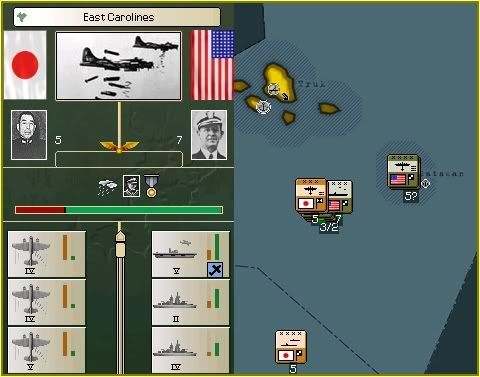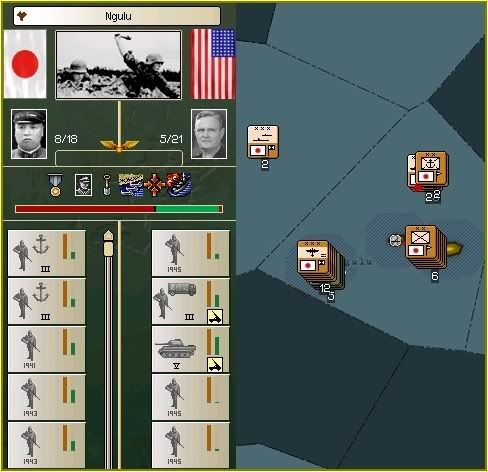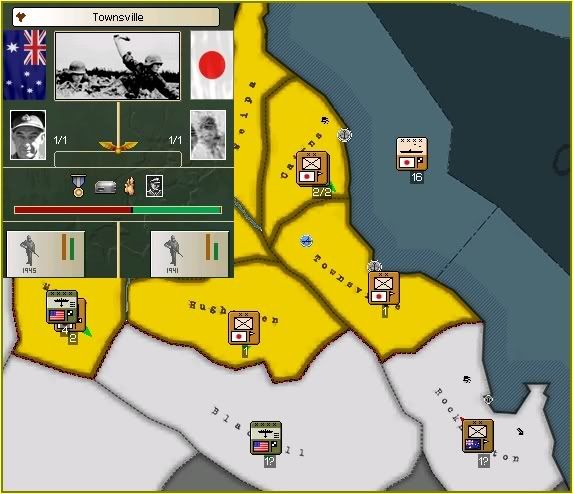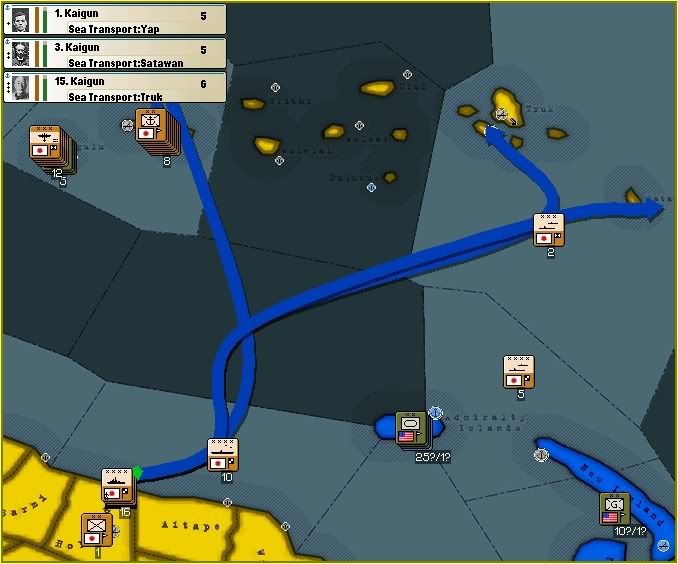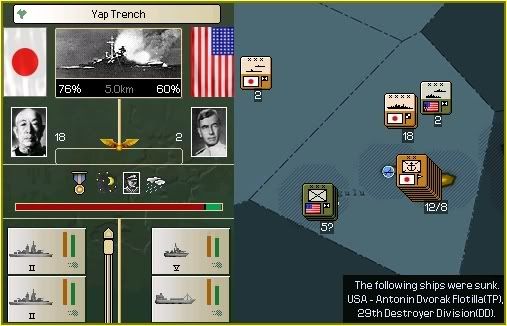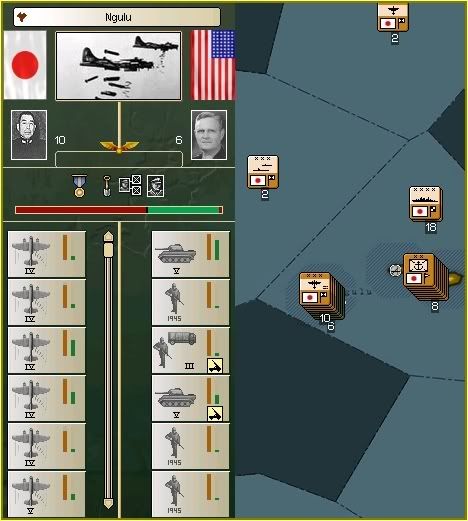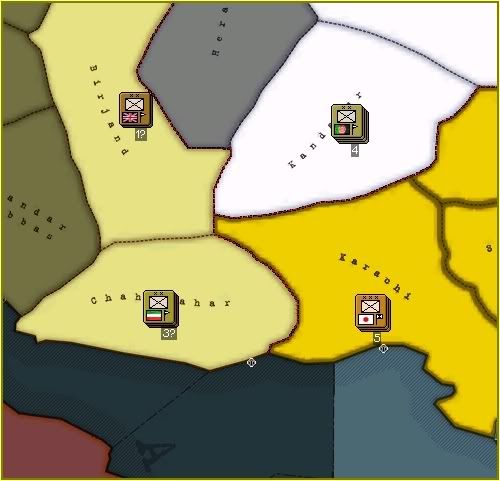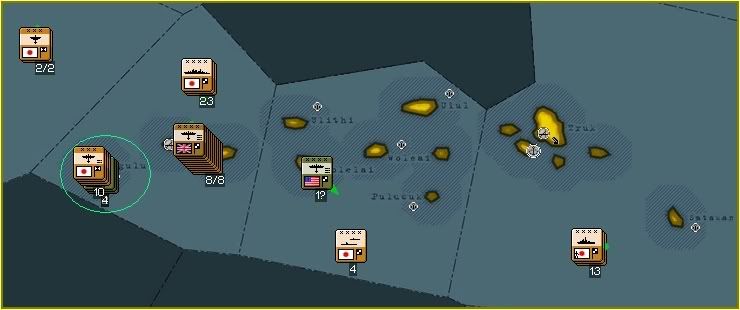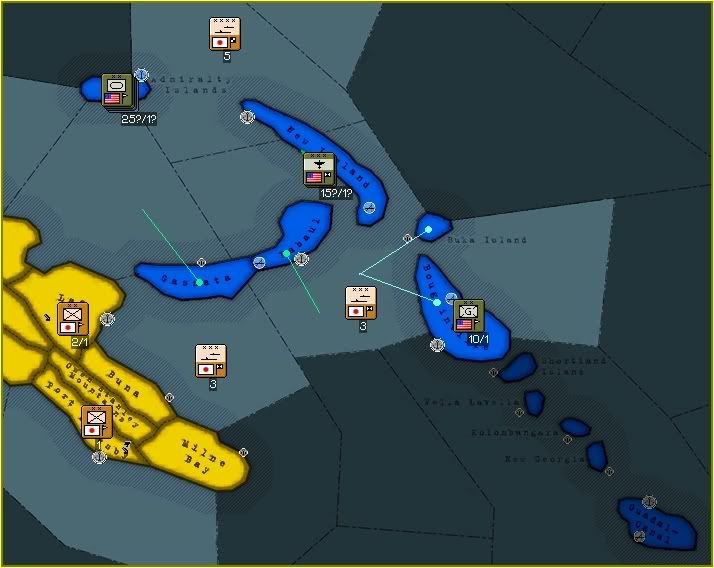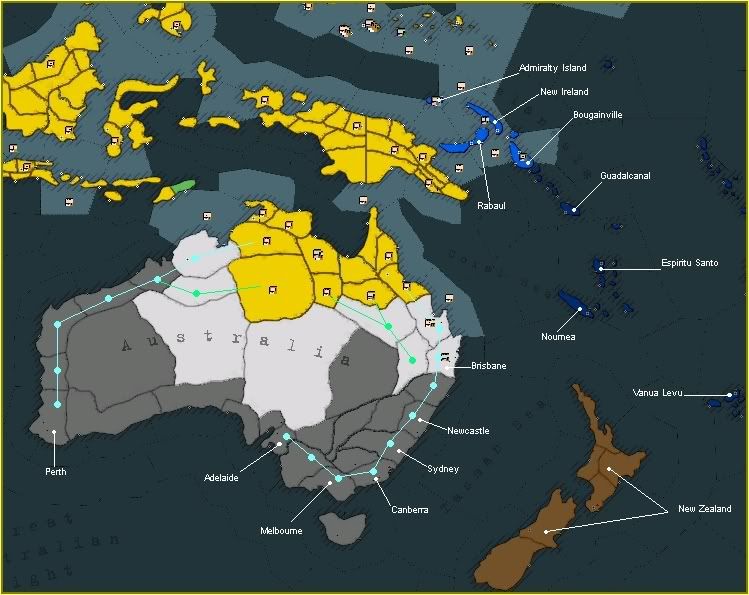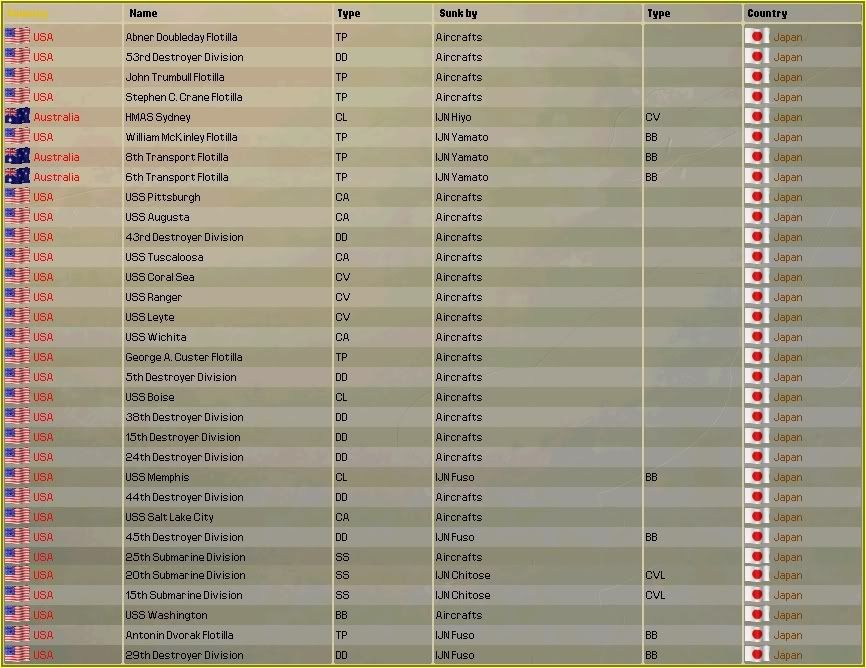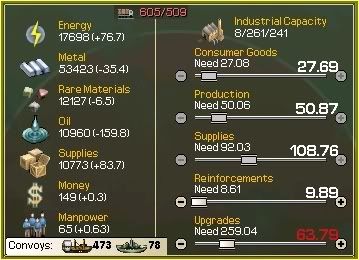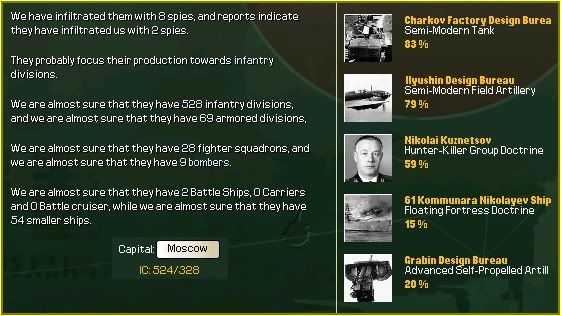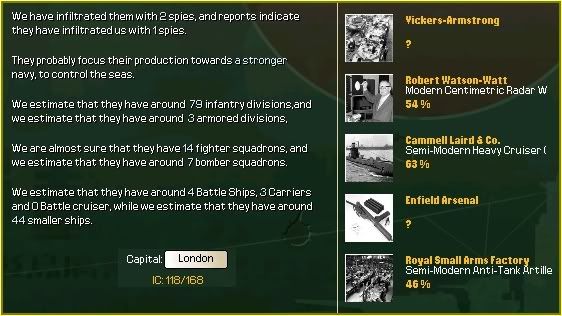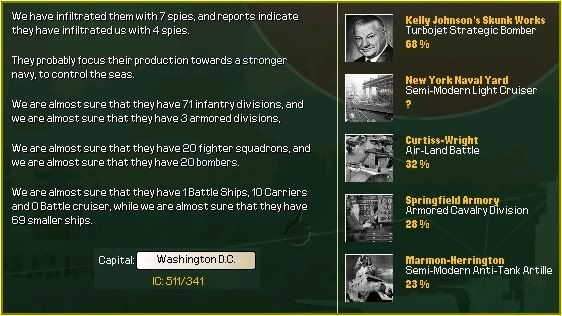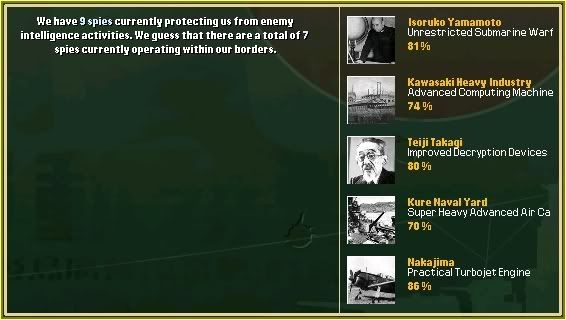Update (February 1st 1946)
0000 February 1st 1946.
Imperial Palace. Toyko, Japan.
"Good morning your Majesty, Gentlemen." Hideki began the meeting. "The New Year has started fairly well and we shall begin with a military round up."
"Thank you Prime Minister. Your Majesty, Gentlemen, good morning. There is only one active Front at this time but it is a vast one. Our advance across the Pacific is increasing in pace and has spread to Australia where our forces are encountering sporadic light resistance. Our process of capturing islands and territory to deny bases to our enemies is also continuing with advances in the Carolines. I will hand you over to Minister Satoru to provide a more detailed account of the current situation and our future plans." Tanigawa stated.
"Good morning your Majesty, Gentlemen." Satoru began. "I will begin with the current situation in India before going on to the Pacific."
"The slow and steady build up of enemy forces adjacent to Karachi continues but has not reached the point where an attack is imminent. I expect several more weeks of quiet in this area before any such offensive could begin. We will use the same tactic as before when this happens and will trade space for time whilst our aircraft destroy the enemy."
"The Carolines are almost secure with only the large defensive force on Ngulu remaining. We have already tried two assaults against these forces, both of which were broken up by the appearance of enemy ships. Our forces are currently regaining strength before trying for a third time. BB Division 2 and most of our Tactical bombers are still supporting this area.
Defensive troops have already arrived on Yap and are on their way to Truk and Satawan to secure those islands from possible counter attack. This will leave us with a strike force of six infantry and two marine divisions for the next phase of offensive operations in this general area."
"Their targets will be in the Bismarck Archipelago and Solomon islands. The first two invasions will secure Rebaul with follow up amphibious assaults towards Baku Island and Bougainville. The defences of Admiralty Island, New Ireland and Guadalcanal will be checked after this and plans will develop from there. These troops may also need to secure more islands of importance after this depending on operations elsewhere."
"Australia and the surrounding area on shown on ths map. The highlighted provinces and cities are estimated to be required before we can force Australia to surrender. The current plan is to march around both sides of the island to capture them using air support to crush any pockets of resistance. Our current aircraft in the area have limited range which is causing some problems.
We have one Transport fleet available at this time which will be used to try and speed up our advances wherever possible. Our other three Transport fleets are currently supporting operations in the Carolines and will also be needed for the attacks towards the Solomons.
Once Australia is secure most of the thirteen divisions will remain behind as a defensive and anti-partisan force whilst the remainder are used to invade New Zealand. Once that is completed they will also be used to invade Fiji to capture the only remaining airbase in that region on Vanua Levu.
Whichever force achieves its objectives first will be used to invade the New Hebreides to secure the bases on those islands. I am aware of the time limitations placed upon us and we will do all we can to complete all of the stated plans.
Should we manage to successfully conquer everything mentioned then the Allies will only have two airbases in the Pacific. Attu Island and Pearl Harbour. There are also some facilities on the Alaskan Islands but these are too far to be of much use. We will try another attack on Attu with our marines should we secure the rest. We have no plans to move towards Hawaii at this time.
The current losses to the United States Navy leave it at a disadvantage to the Imperial Japanese Navy in numbers and firepower which we will try and utilise to keep the Americans in check while we prosecute your wish to attack the Soviet Union your Majesty.
Most of our Interceptors and all of the Naval bombers will remain in the Pacific to monitor sealanes while the remainder of the Imperial Japanese Air Force heads to Asia.
We will have five operational Battlefleets available after these operations unless we have a major disaster. These fleets will be placed at strategic locations to try and foil any advances the Allies try to make in the Pacific. Once we can we would like to begin the process of modernising the Imperial Japanese Navy by building new Aircraft Carriers and support vessels as well as medium sized ships for sealane interdiction."
"Battleships?" asked Hirohito.
"Maybe your Majesty but we have several already although they are not modern. Should we have the capacity then we can always add some more of those as well."
"That seems reasonable as our manpower is severely limited." replied the Emperor. "Please continue Minister Satoru."
"That actually concludes my briefing your Majesty so I will hand you over to Minister Osami for a Naval briefing." concluded Satoru.
"Thank you Minister Satoru. Good morning your majesty, Gentlemen. The Imperial Japanese Navy has had another of its loss free months. The same cannot be said for our enemies." Osami began.
"Once again the United States Navy has bore the brunt of our attacks with a fairly large number of vessels being sunk, mostly by our aircraft.
Australian Losses
1 x Light Cruiser.
2 x Transport Flotillas.
American Losses
3 x Aircraft Carriers.
1 x Battleships.
5 x Heavy Cruisers.
2 x Light Cruisers.
3 x Submarine Divisions.
9 x Destroyer Divisions.
6 x Transport Divisions.
Thirty two ships or flotillas in all nearly all of which were American. The loss of three modern Aircraft Carriers and one of their two remaining Battleships is worthy of note. There has been no noticable increase in enemy Transport fleet sightings which leads us to believe that they are not replacing these ships faster than we are sinking them. The United States Navy is still a threat and will remain so until we can conquer their production centers. Our operations over the last six months have provided us with enough breathing space to have possibly two years in Russia without the threat of being over run in the Pacific.
There is still no sign of any Soviet build up along our borders and no sign of the Royal Navy. They seem to have rather prudently left the Pacific to the Americans. Nothing further from the Armed Forces." concluded Osami.
"Your thoughts on the Soviets Minister Mamoru?" Hirohito asked his Foreign Secretary.
"They seem content to watch and build up their forces your Majesty. They do not really have any reason to become involved whilst their two main opponents fight eachother with neither side close to winning. Neither us or the Allies are weak enough for the Soviets to be able to simply overpower us so I expect them to do nothing." replied Mamoru.
"It has been very nice of them to stay out of our little War. We will still be inviting them to participate once the snows melt however." stated Hirohito.
"Industry next please."
"Good morning your Majesty, Gentlemen." began Ginjiro. "Production has changed little but we do have more spare industrial capacity that has been switched to upgrades as a result of improved trade agreements. The reduction in repair needs has also been directed towards upgrades."
"Transport Capacity has been hampered by two things. Increased need for supplies for offensive operations and conquest of rebellious areas in Australia. This is likely to increase as we advance further but should drop a little once our advances are concluded. The need for garrison divisions is increasing by the day.
Industrial capacity has increased by two factory complexes which were captured in Australia. This will increase further as we advance as will our raw material production.
I have no major concerns regarding resources as none are deteriorating quickly with both energy and supplies increasing. Monetary matters are stable but we could use extra money for espionage.
Our convoys are not being over stretched so far and production of them continues. Repairs are reducing well as ships complete long term refits. This will increase significantly once the Imperial Japanese Air Force is allowed to rest to recover its damage.
We still have ninety six units needing upgrades and the pace of these improvements should increase now that we have more production available to use. Infantry are the current highest priority as they will be needed in Asia."
"What sort of equipment are the Soviets estimated to be using Minister Kuniaki?" Hirohito asked.
"Similar to ours your Majesty. They are still trying to catch up with their own modernisation program since the fall of Germany. I would not expect their troops to be as advanced as the smaller Allied armies." Kuniaki replied.
"My report is finished by the way." stated Ginjiro.
"On to Intelligence then please."
"Thank you Prime Minister. Good morning your Majesty, Gentlemen. No earth shattering things to report so I will continue with the standard inaccurate reports." Kunaiki began.
"Soviet industry is the same and they have not completed any research projects in January.
Their Armed Forces show a slight increase in infantry but that is all. They do not seem to be building up rapidly in any areas."
"The United Kingdom's industrial base is unchanged and still suffering rare materials shortage which changes day by day. They completed research into Plastics and one unknown other field.
They seem to have lost fifteen infantry divisions somewhere during the last month but I have no idea where so it is probably just a reporting error.
Nothing of note for the Royal Air Force or Royal Navy with only small changes."
"Industry is unchanged in the United States and two research projects were completed. They have a new model of Close Air Support Aircraft and Naval Bomber available.
The numbers show a loss of five infantry and four armoured divisions. That is probably close to being accurate as they did lose troops on Truk and in Australia.
The United States Air Force shows a large drop in fighters which could be due to them being captured on their bases as we advance or it could just be that they are in transit somewhere.
One Battleship and three Carriers have been sunk and confirmed so these numbers seem to be correct. Twenty five smaller vessels also appear to have been sunk and this also tallies with our own numbers. This would mean that they produced no new ships in January."
"I estimate there are seven enemy spies in our Country of which just over half are American and the rest Soviet. We completed no research projects but might finish one in February. Done." concluded Kuniaki.
"Thank you Gentlemen. Things seem to be going according to plan so keep up the good work." stated Hirohito as he stood and left the meeting.
